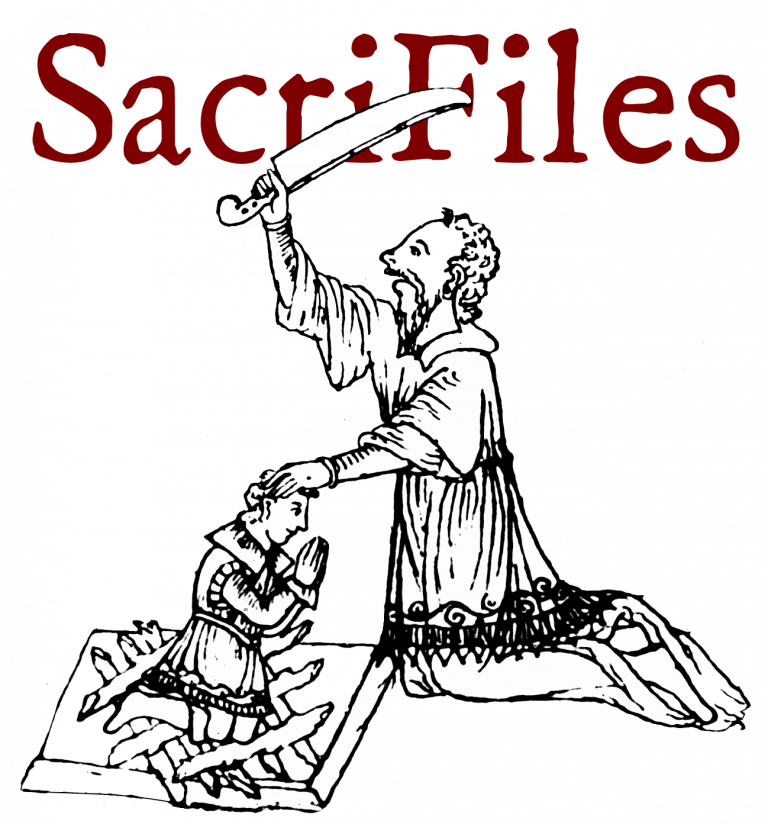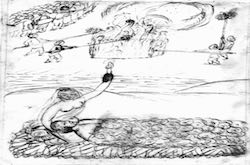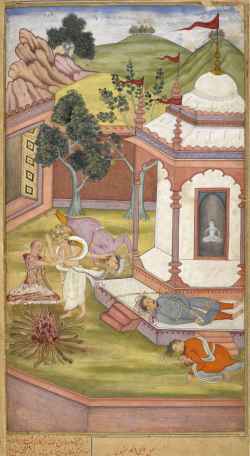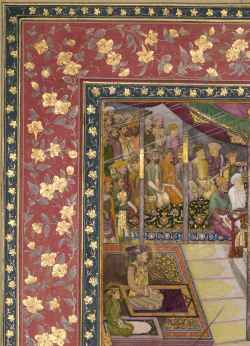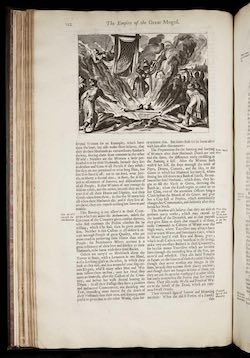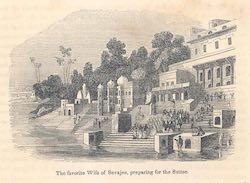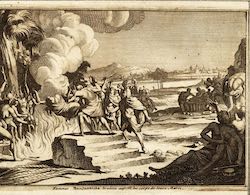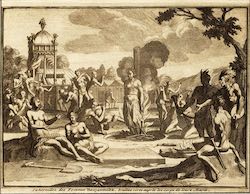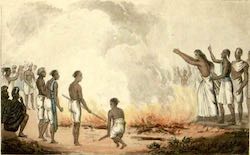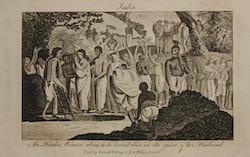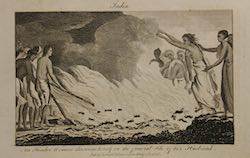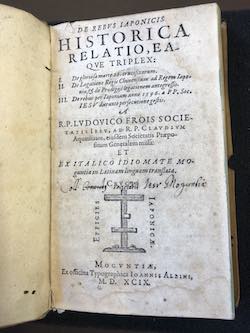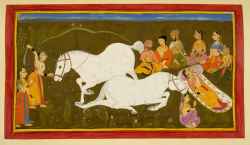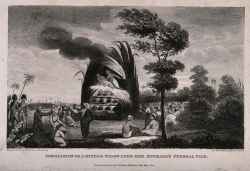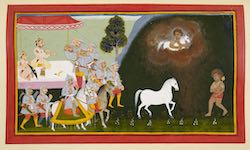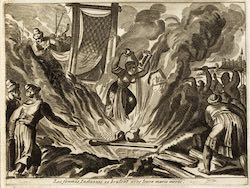Keyword: India
Burninge of a Banion Woman (1630s)
from: Banerjee, P. Burning Women, New York, Palgrave-Macmillan, 2003, p. 123
Candrahasa sacrifices himself cutting off pieces of his own flesh and putting them on the fire [1598]
from: Razmnāmah by Abhinanda, India (The last volume of the Persian translation of the Mahābhārata commissioned in 990 by Akbar)
London, British Library, Or 12076 folio: 90v
Ceremony of Burning a Hindu Widow (19th century)
http://www.columbia.edu/itc/mealac/pritchett/00routesdata/1800_1899/hinduism/sati/sati.html
Emperor Jahangir and Prince Khurram at the gathering for the Feast of the Sacrifice (1615-1625)
from: India
Staatliche Museen zu Berlin, Museum für Islamische Kunst
Empire of Great Mogol (18th century?)
http://www.columbia.edu/itc/mealac/pritchett/00routesdata/1800_1899/hinduism/sati/sati.html
Favorite Wife of Sevajee (1851)
http://www.columbia.edu/itc/mealac/pritchett/00routesdata/1800_1899/hinduism/sati/sati.html
Femmes Benjanoises brulees (1725)
from: van der Aa, P. La galerie agreable du monde. Tome premier des Indes Orientales, Leiden, c. 1725
http://www.columbia.edu/itc/mealac/pritchett/00routesdata/1800_1899/hinduism/sati/sati.html
Funerailles des Femmes Benjanoises (1725)
from: van der Aa, P. La galerie agreable du monde. Tome premier des Indes Orientales, Leiden, c. 1725
http://www.columbia.edu/itc/mealac/pritchett/00routesdata/1800_1899/hinduism/sati/sati.html
Hindoo Widow Burning Herself with the Corpse of the Husband (1820)
from: Shoberl, F. The World in Miniature: Hindoostan, London, Ackerman, 1820s
http://www.columbia.edu/itc/mealac/pritchett/00routesdata/1800_1899/hinduism/sati/sati.html
Hindoo Woman about to be Buried (1811)
from: Goldsmith, J. Geography on a Popular Plan, London, Richard Phillips, 1811
http://www.columbia.edu/itc/mealac/pritchett/00routesdata/1800_1899/hinduism/sati/sati.html
Hindoo Woman throwing herself (19th century?)
http://www.columbia.edu/itc/mealac/pritchett/00routesdata/1800_1899/hinduism/sati/sati.html
Historica Relatio1 (1598)
from: Peruschi, G. Historica Relatio, de Potentissimi Regis Mogor, Mainz, Breem, 1598
Historica Relatio2 (1598)
from: Peruschi, G. Historica Relatio, de Potentissimi Regis Mogor, Mainz, Breem, 1598
Horse sacrifice (Asvamedha) (1712)
from: Ramayana, Bala Kanda, Ms Add. 15295, fol. 33
British Library, London [from Udaipur]
Immolation of a Hindoo Widow (1814)
from: Lester. The Gallery of Nature and Art, 1814
London, Wellcome Collection
In the palace, Rāvaṇa and his remaining brothers and sons are bowed down by grief and Rāvaṇa wonders how he can ever be victorious in this conflict, when so many demon champions have been slain. Another son, Indrajit, boasts that he will overcome Rāma and Lakṣmaṇa and sets out in his chariot, surrounded by other demons on elephants, horses and in chariots. In a separate chamber (the text actually says on the battlefield), he prepares offerings, seizing a young black goat by the neck, to the god of Fire in order to conjure up his most magical weapons and to make himself invisible. (ca 1653)
from: Ramayana [ms Add. 15297(1), fol. 97]
British Library, London [from Udaipur]
Indian Woman Burning Alive (18th century)
http://www.columbia.edu/itc/mealac/pritchett/00routesdata/1800_1899/hinduism/sati/sati.html
King Sagara performs a sacrifice (1712)
from: Ramayana, Bala Kanda
British Library, Add. 15295, f.105
Les femmes Indiennes se brulent (1725)
from: van der Aa, P. La galerie agreable du monde. Tome premier des Indes Orientales, Leiden, c. 1725
http://www.columbia.edu/itc/mealac/pritchett/00routesdata/1800_1899/hinduism/sati/sati.html
